2023 Mazda CX-5 Review: Beaten by its own brother

Pros: Engaging and refined to drive; luxurious interior; strong turbo engine; good looks; top crash scores
Cons: No hybrid available; infotainment system won’t be for everyone; a bit small; not as good as CX-50
The 2023 Mazda CX-5 is basically the same compact SUV as last year. It has the same list of pros and cons, and it still represents a sportier and more premium take on its segment of more overtly family-oriented entries. We called it a “terrific choice” last year, and in a way, it still is. Trouble is, it’s now hard for us to recommend the CX-5 since Mazda itself has now put forth an even better choice: the new CX-50. That extra zero in the name represents a new entry for the Japanese company, a compact SUV specifically designed and engineered with the North American market in mind, as opposed to a more global product like the CX-5. Basically, it offers all the virtues of its zero-less sibling, but is a bit bigger, more refined and capable of going further off-road. We think it looks better, too. And it’s made in America.
So why get the CX-5 instead of the CX-50? That’s a really good question. Besides “it’s a bit cheaper” or “there was actually one at a dealer,” we’re left scratching our heads. Even the CX-50’s primary cons, no hybrid powertrain and less space than competitors, are the exact same as the CX-5. For argument’s sake, though, let’s say the CX-5 proves to be the better choice for you. It’ll still strike a more emotional cord than the RAV4s and CR-Vs of the world with its sharper driving experience, luxurious interior and sleek style. It’ll be especially appealing to single folks, DINKs and empty nesters, plus those coming from a sporty car. Oh, and those who don’t want or can’t get a CX-50.
Interior & Technology | Passenger & Cargo Space | Performance & Fuel Economy
What it's like to drive | Pricing & Trim Levels | Crash Ratings & Safety Features
What's new for 2023?
After a slew of updates last year, the CX-5 carries over unchanged into 2023 apart from a new premium color option called Rhodium White.
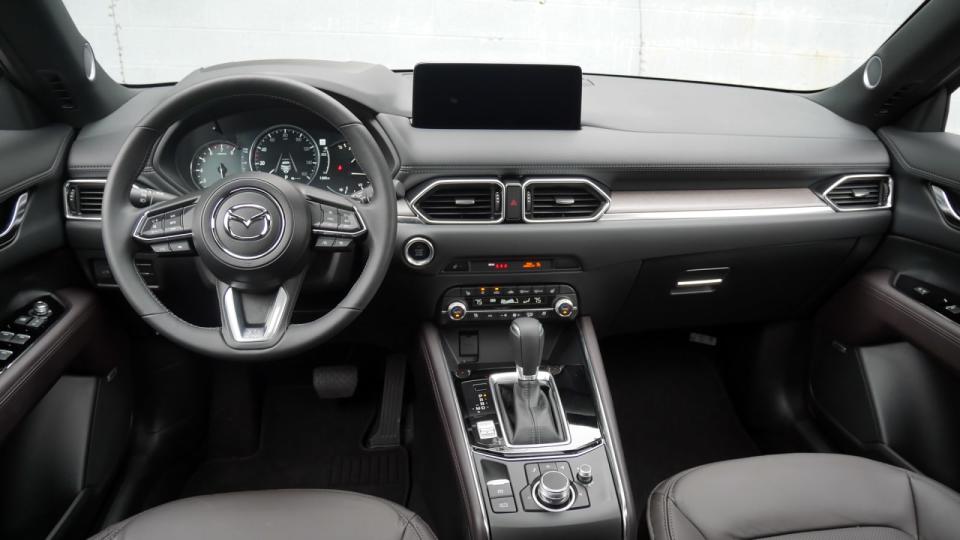
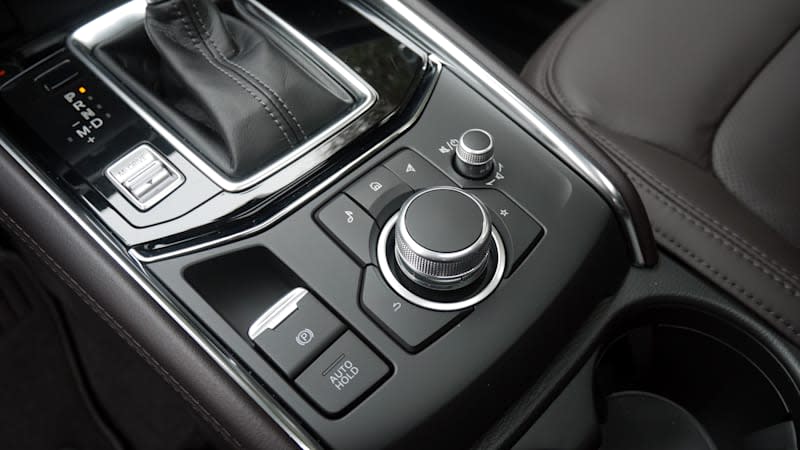
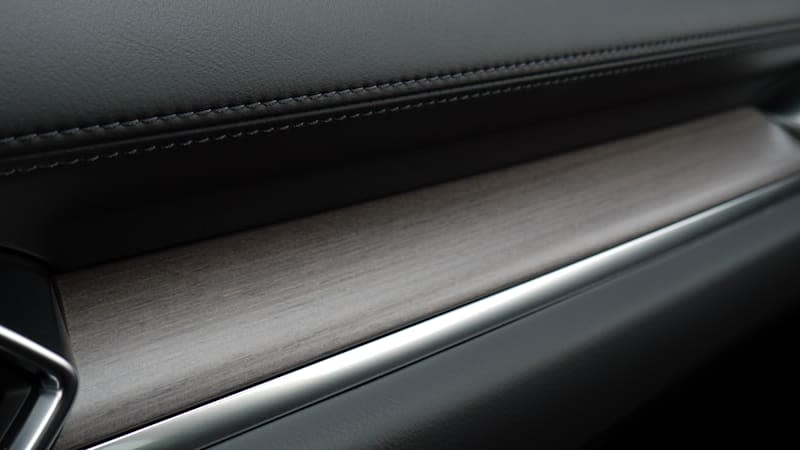
What are the CX-5 interior and in-car technology like?
The CX-5 boasts a handsome, upscale design with materials to match, exuding a premium vibe that none of its direct competitors can match (well, besides the CX-50). Its top trim levels have seats that are heated all around and ventilated up front, plus high-quality leather with contrast French stitching. The Signature gets unique Catarra Brown Nappa leather, shown here. The padded and stitched pleather on the dash, doors and center console are a nice touch too, as is the alloy trim — especially the air vents that seem to jut out from within the dash. Admittedly, fancier touches like the Signature's wood-look trim are absent on lower trim levels, but the overall interior ambience remains more premium and stylish than those of most competitors — especially something like the Toyota RAV4 and Subaru Forester that are going for more of a rugged, utilitarian vibe.
Mazda's tech interface is distinctive in that it uses a center console knob controller rather than a touchscreen. This isn't Mazda being behind the times, it's a conscious effort to reduce driver distraction. The dashtop screen is large and easy to see while running a relatively simple and quick user interface. The knob that controls it is big, ergonomically placed on the center console and, like BMW's iDrive controller, can rotate through menus or move up/down, left/right among icons. This latter feature is key for using Apple CarPlay and Android Auto, which is where the troubles begin. Both connectivity features are intended for a touchscreen and selecting their icons by rotating and clicking the knob is more time consuming and distracting. There’s a reason Mazda added touchscreen functionality to the CX-50 specifically for CarPlay and Android Auto. That said, wheeling through playlists or contacts is actually easier with a knob, and unlike most other manufacturers, Mazda doesn't lock out those functions while the vehicle is in motion (good news for passengers).
How big is the CX-5?
Although the CX-5 is smaller on the outside than the CX-50, they are virtually identical inside apart from some extra width in the CX-50. Either way, both are on the small end of the compact SUV segment. The CX-5 has adequate space inside for four occupants to ride around in relative comfort, but families may find they could use the sort of extra space provided by the Honda CR-V, Hyundai Tucson and Toyota RAV4. Kids are more likely to end up kicking the front seats from front-facing child seats, and those up front are more likely to need to scoot their seats up to make room for rear-facing child seats.
The CX-5 has 30.9 cubic-feet of space behind its back seat, which is considerably less than those competitors. The CX-50 has 31.4 cubic-feet, so ditto. The Kia Sportage (39.6), Hyundai Tucson (38.6), Toyota RAV4 (37.5), 2023 Honda CR-V (36) and the Subaru Forester (between 33 and 35 depending on options) all have more. That said, the CX-5 does have more than the Chevy Equinox and Ford Escape, and in our luggage test, found it could hold five suitcases and three duffle bags. That's a clear upgrade over various midcompact SUVs like Mazda's CX-30.
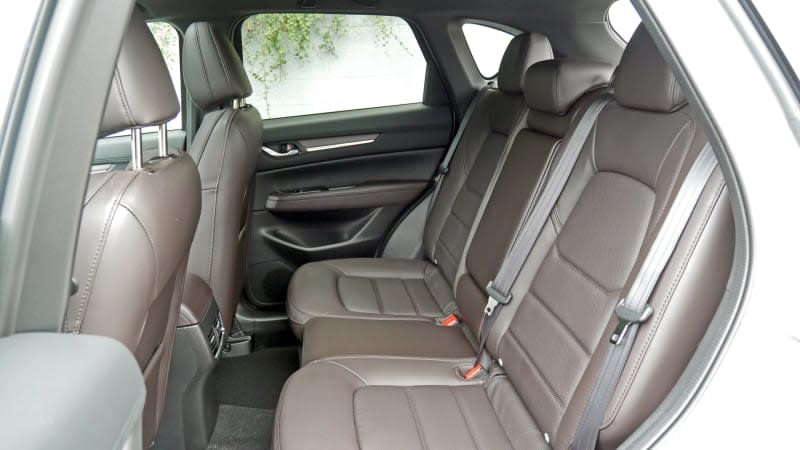
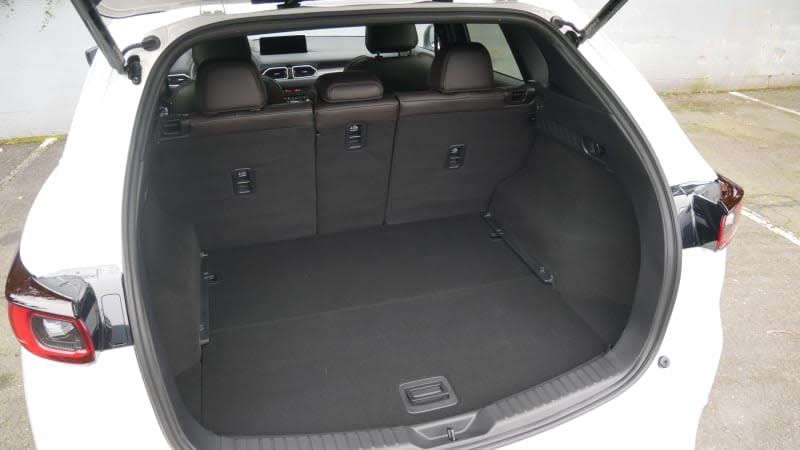
What are the CX-5 fuel economy and performance specs?
Mazda CX-5 trim levels with 2.5 S in their name feature a 2.5-liter inline-four that produces 187 horsepower and 186 pound-feet of torque. A six-speed automatic transmission and all-wheel drive are standard. It's a unique AWD system that monitors vehicle weight distribution among the usual factors of throttle position and current traction in order to improve response and handling. Fuel economy estimates for 2023 were not available at this time, but it’s highly unlikely they’d change substantially after last year’s of 24 mpg city, 30 mpg highway and 26 mpg combined. These are lower than the CR-V, Forester and RAV4, which fall in the 28-29 mpg combined range. The CR-V and RAV4, plus the Hyundai Tucson, also offer more efficient and highly recommended hybrid powertrains.
Trim levels with 2.5 Turbo in their name feature a 2.5-liter turbocharged inline-four good for 227 hp and 310 lb-ft of torque. It'll do 256 hp on 93 octane if you live in a place that sells that and you feel like paying more for gas. Either way, this engine produces the sort of energetic acceleration that few others in the segment can match, including none of those competitors above. It too is paired with a six-speed automatic and all-wheel drive. Fuel economy drops further down to 22 mpg city, 27 mpg highway and 24 mpg combined.
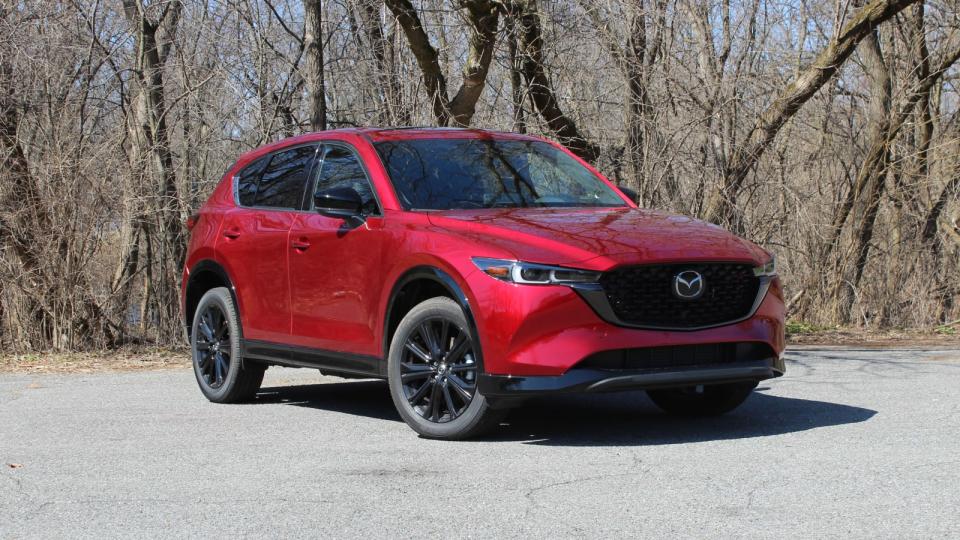

 Yahoo Autos
Yahoo Autos 
